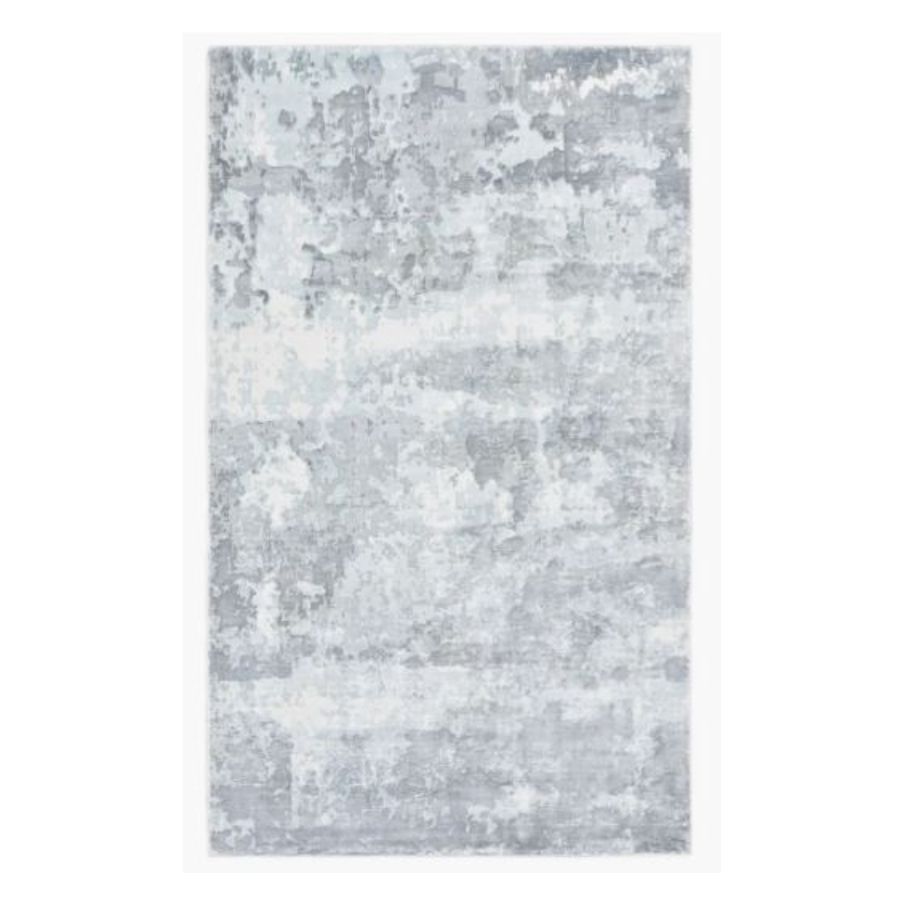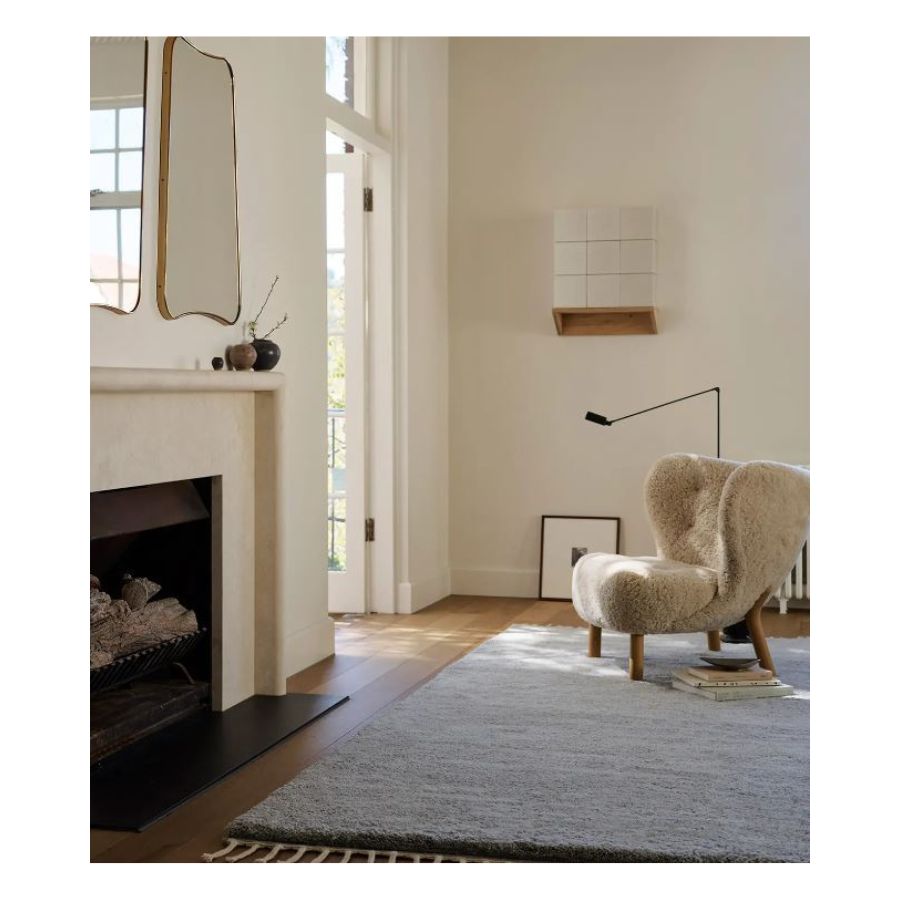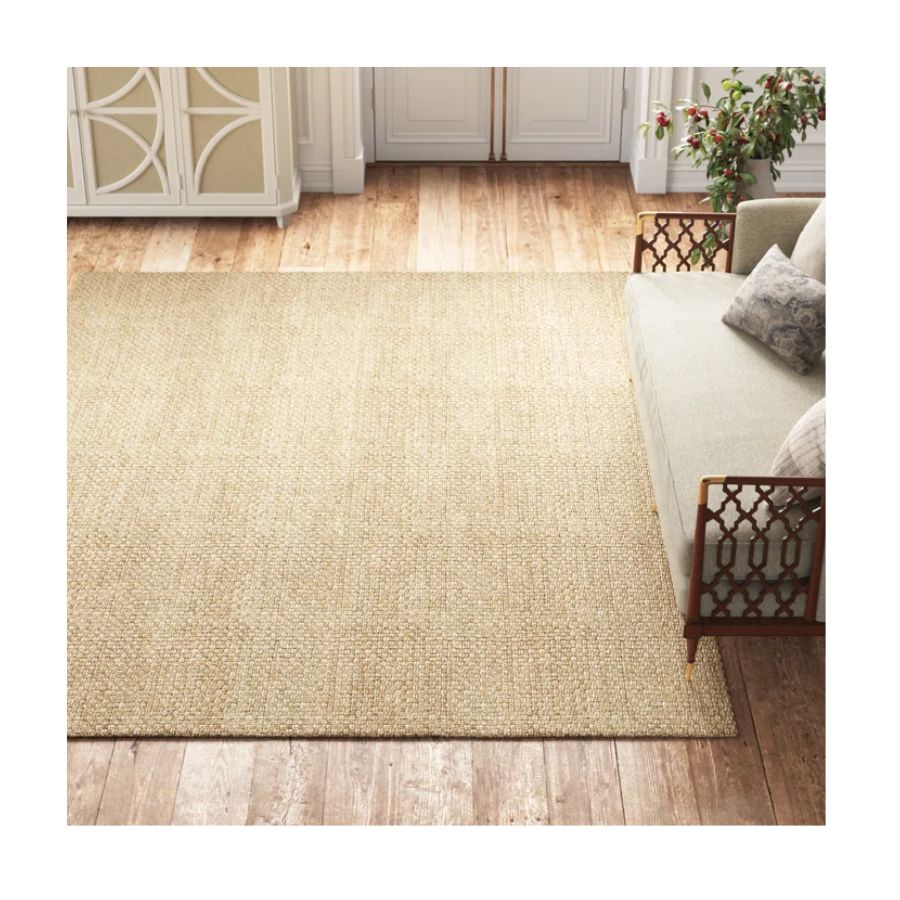'Bigger is always better!' – 3 rug placement tricks to make small a living room look larger
I spoke to interior design experts and they revealed their top tips for using rugs to make my living room look bigger
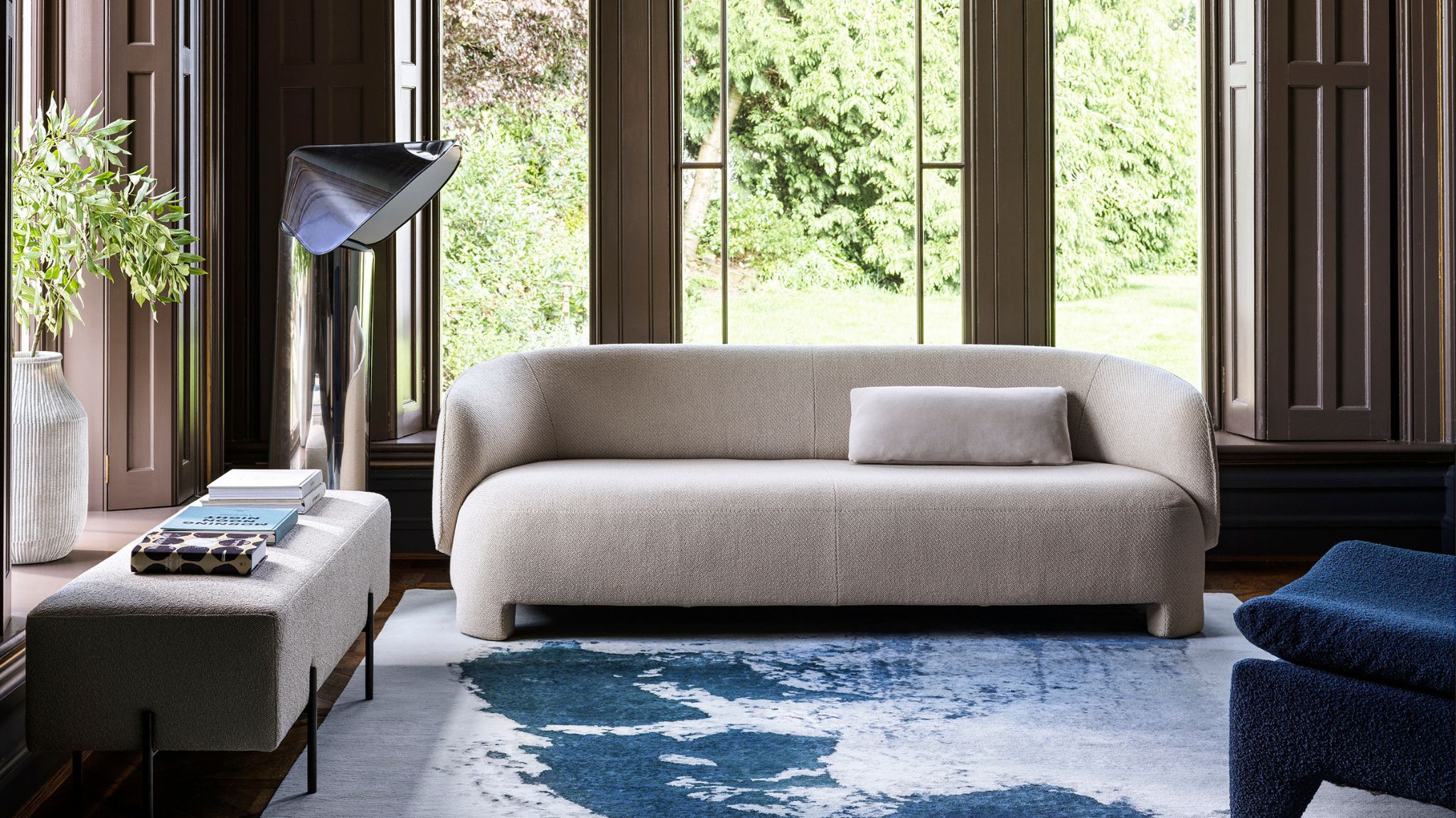
If you’re anything like me you'll always be on the lookout for tips to make your space feel bigger. This is of utmost importance to so many of us, especially those living in city apartments where space in particular is an issue. Even if the square footage might not be as big as you’d want it to be, there are numerous design hacks that you can use to your advantage to give the impression of more room, and choosing the right rug is one of them.
We're all familiar with the power of color when it comes to giving the illusion of more space, but professional designers say the rugs you choose and how you place them can have as much of an impact on how you perceive a space. I spoke with some experts to help me figure out exactly how to use rugs to make my living room feel bigger, and here are their tips that you can implement straight away.
1. Bigger is better
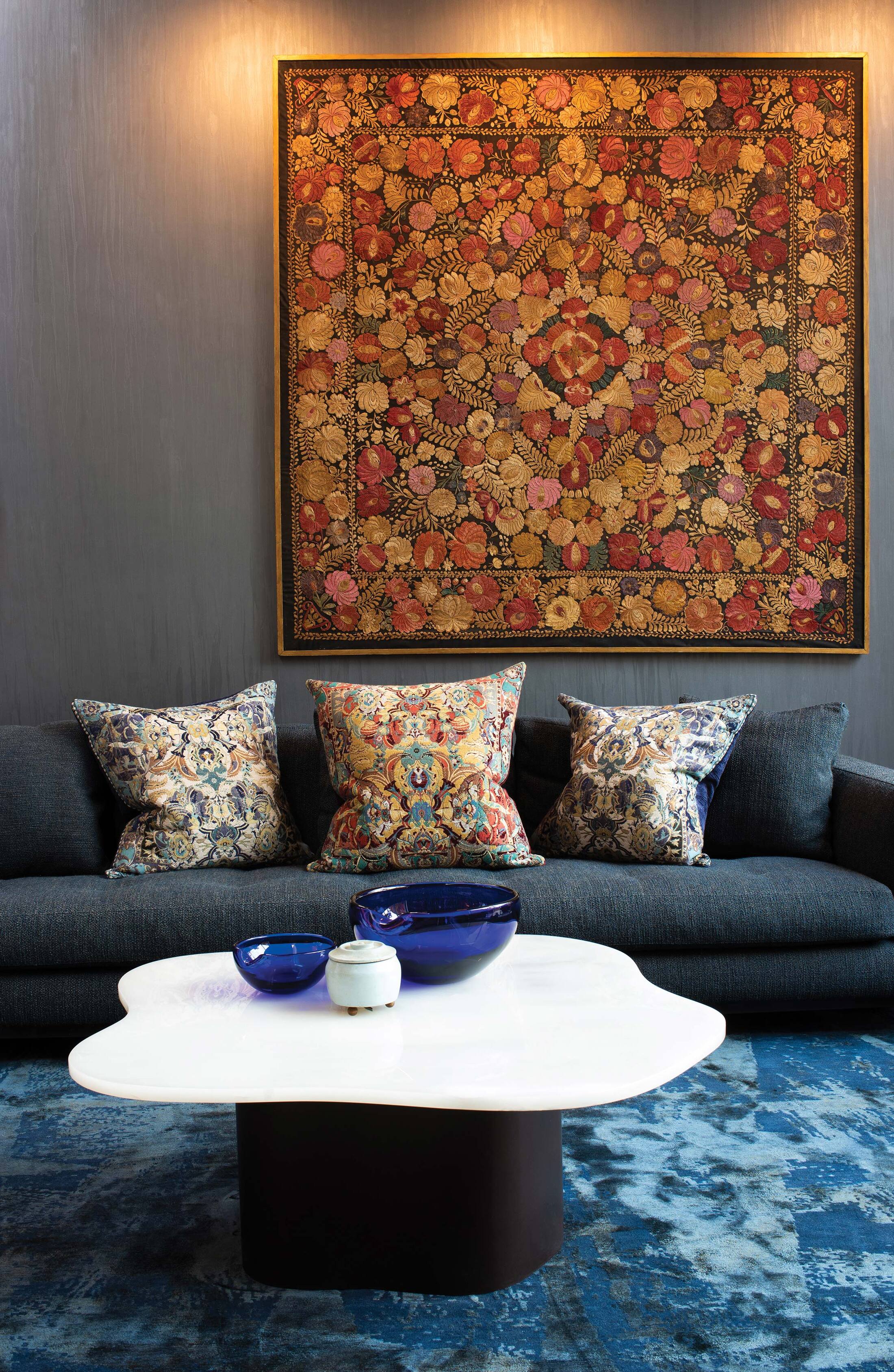
An honest mistake many of us make is thinking that in a small room, you need to buy a small rug, but this couldn’t be further from the truth. Whenever you want to create the illusion of space, bigger is always better, and if you take any living room rug ideas away from this article, this is the single and most important rule for using your rug to make your room feel bigger.
‘When it comes to rugs, bigger is always better,' explains Lauren Sullivan, founder and principal designer of Well x Design. 'A rug that's too small will make your space in turn feel small and disjointed, but a larger rug will make the space feel less cramped and better proportioned.'
Jodie Fried and Sally Pottharst, founders of Armadillo Rugs, agree, emphasizing the importance of proportions when choosing the best rug. ‘An undersized rug will throw everything off balance,' they say. 'At a bare minimum, the edges should just exceed the furniture under which it is placed, leaving some space between the rug and the walls to highlight beautiful flooring.’
If in doubt, Shelby Van Daley, founder and principal designer of Daley Home, offers some advice for choosing the perfect-sized rug. ‘A good rule of thumb is to measure your room and you can go one foot off of each wall,' she says. 'This is a good way to ensure that all of your furniture can fit on the rug.'
If you find or already have your dream rug and it's too small, Shelby suggests layering rugs instead. 'Try using a sisal or jute rug to layer under,' she continues. 'This will help make your room feel larger and will add a great layered feel to our space.'
2. Consider the position of the furniture legs
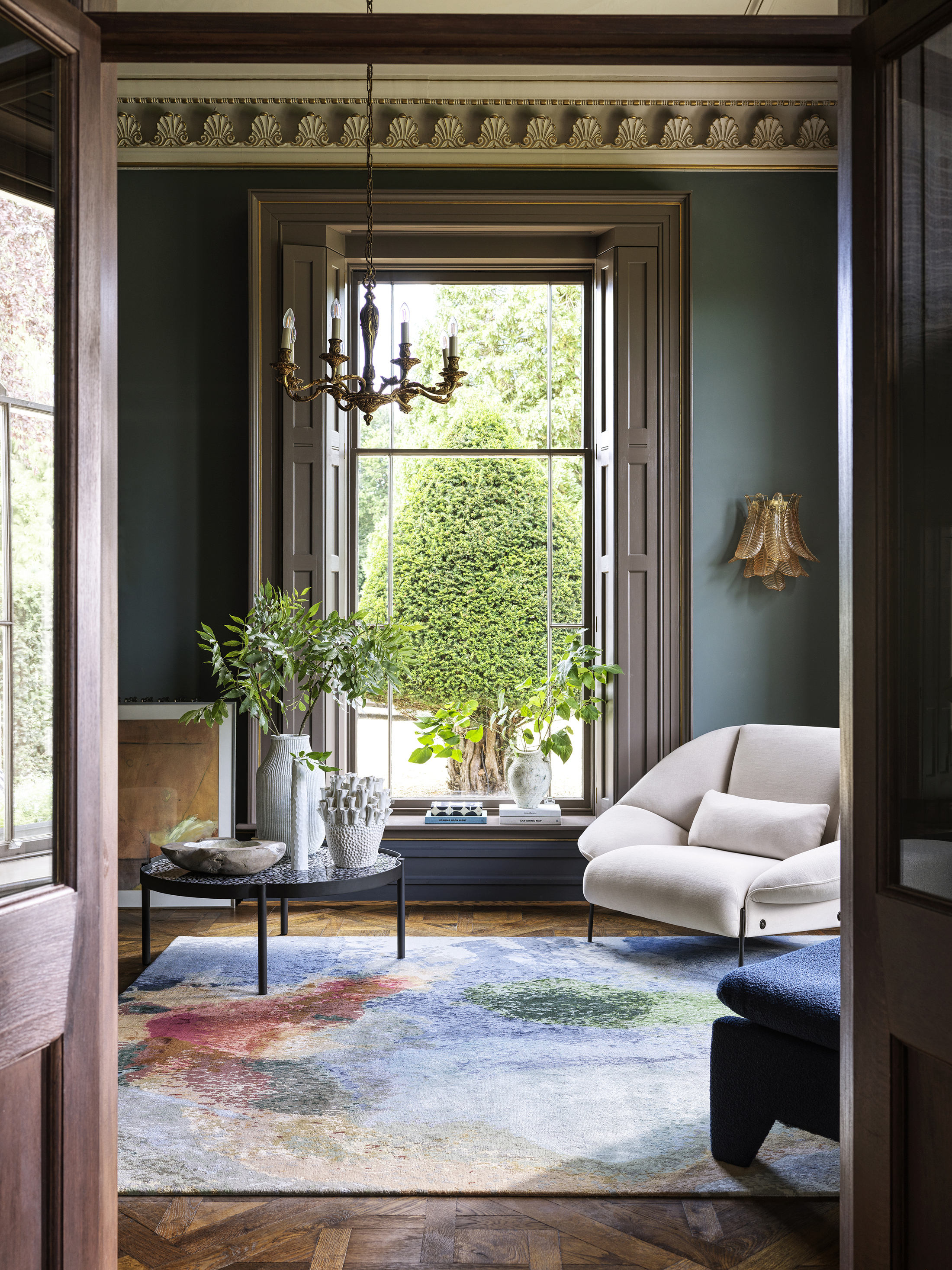
The size of the rug is important, but so is making sure that wherever possible, all furniture legs fit on it, as this will help create the illusion of ample space. Choosing a rug placement that doesn't accommodate for at least some of your furniture legs will have the opposite effect and highlight that there's a shortage of space.
Here’s Lauren's rule of thumb. ‘If possible, all legs of the furniture should be placed on the rug—or all front legs of the furniture at the very least (the rug should go under furniture around 1/3 of the piece's width),' she says. 'Be sure to leave 8 to 12 inches of rug between the edge of your furniture and the edge of the rug.'
‘Having all the furniture fit onto the rug helps the space feel cohesive and larger,' adds interior designer Kathryn Murphy. 'This is the case even if there's technically a pathway through, as I see in some of our narrow Chicago bungalows. Just make sure you rotate your rug every few months if that’s the case.'
3. Choose your rug design wisely
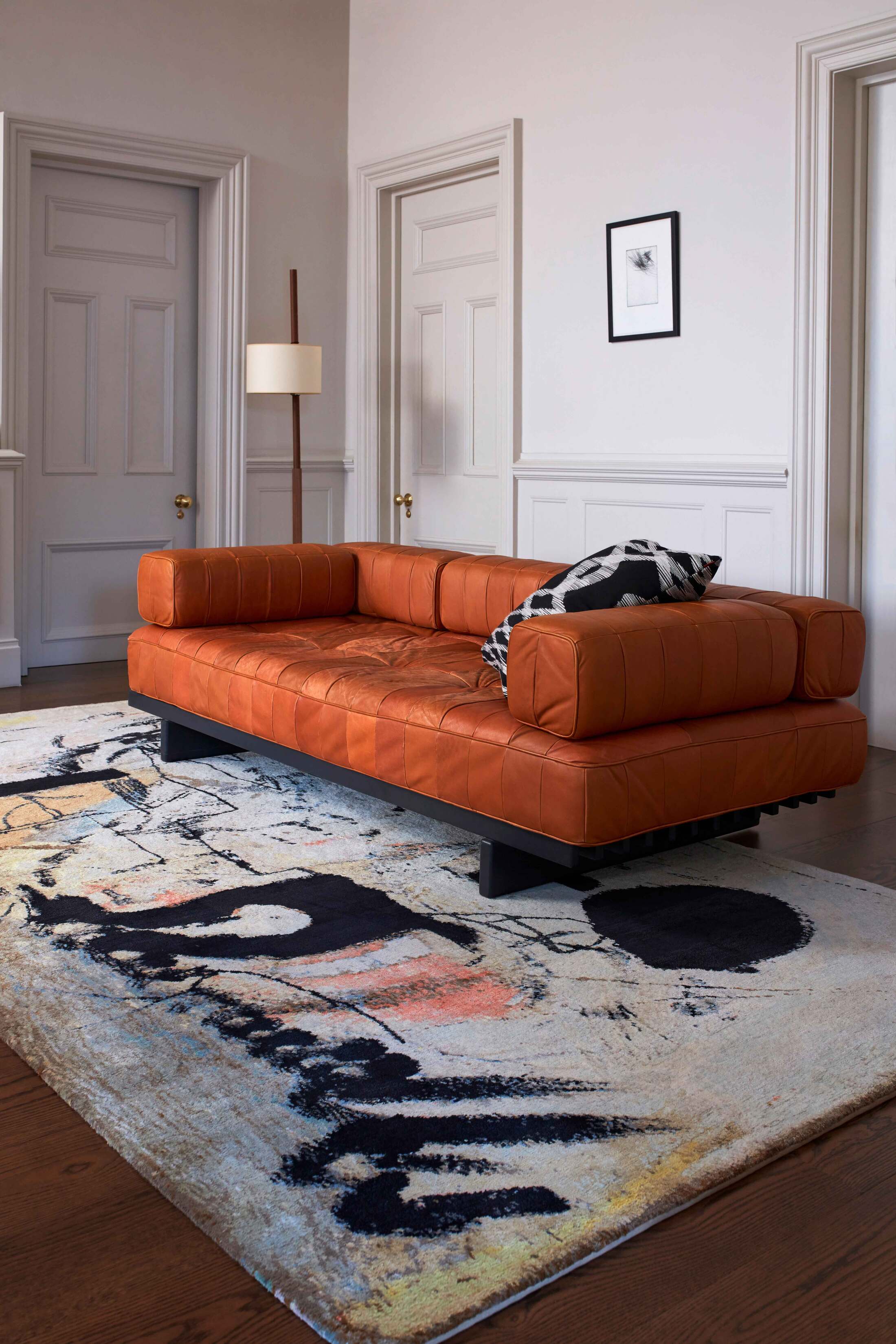
Of course, the style and material of your rug should also come into play when it comes to choosing a living room rug. If the color, texture, and overall design are in harmony with the room decor, the visual effect will be one of cohesiveness and therefore the room will appear more spacious.
‘The right rug will make a living room, the heart of the home, feel truly warm and welcoming,' says Jodie. 'Oftentimes a rug is treated as an afterthought, but we advise choosing the style, size, and color at the same time that you source furniture and accessories to ensure harmony in the overall décor.’ Sally adds that while color is a personal preference, a lighter, neutral palette will feel more open and airy. 'Add depth and interest with a rich, textural weave to make the interior sing without overpowering other design elements,’ she adds.
As well as color, interior designer Naomi Astley Clarke has a few words of advice on the material. 'To make the living room look and feel more spacious, choose a large velvet pile in a plain, light, or neutral color, as this will instantly brighten up the space,' she says. Bonnie Sutton, founder of Knots Rugs adds that 'long, linear patterns on the rug can also help give the feeling of elongating the room’.
Ready to make your small living room seem larger? Apply these simple tricks to your rug today and I'm sure you'll instantly notice the difference!
The Livingetc newsletters are your inside source for what’s shaping interiors now - and what’s next. Discover trend forecasts, smart style ideas, and curated shopping inspiration that brings design to life. Subscribe today and stay ahead of the curve.
Raluca formerly worked at Livingetc.com and is now a contributor with a passion for all things interior and living beautifully. Coming from a background writing and styling shoots for fashion magazines such as Marie Claire Raluca’s love for design started at a very young age when her family’s favourite weekend activity was moving the furniture around the house ‘for fun’. Always happiest in creative environments in her spare time she loves designing mindful spaces and doing colour consultations. She finds the best inspiration in art, nature, and the way we live, and thinks that a home should serve our mental and emotional wellbeing as well as our lifestyle.
